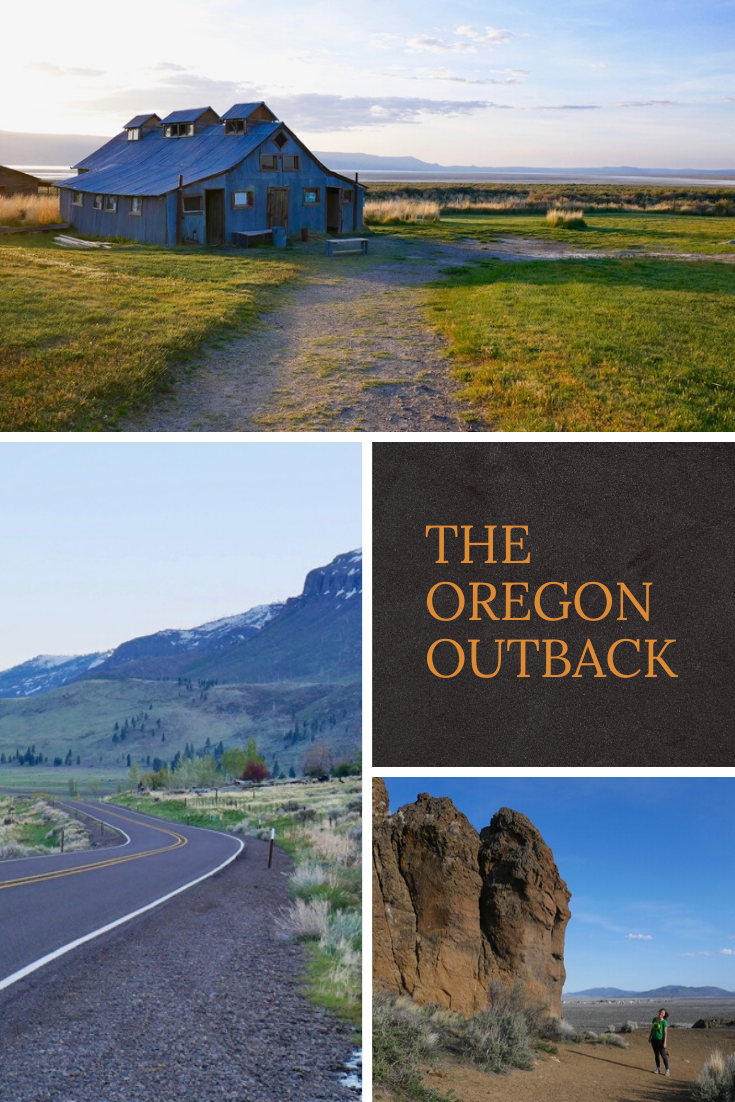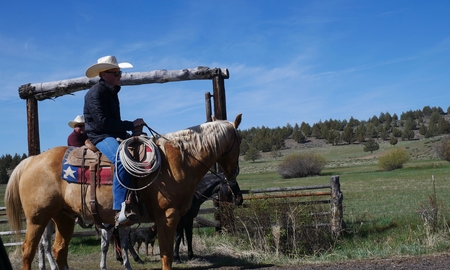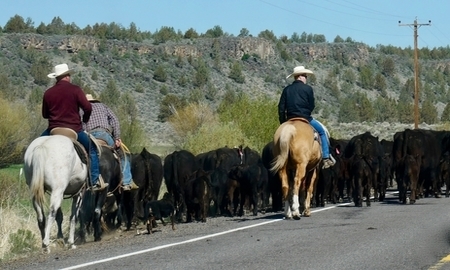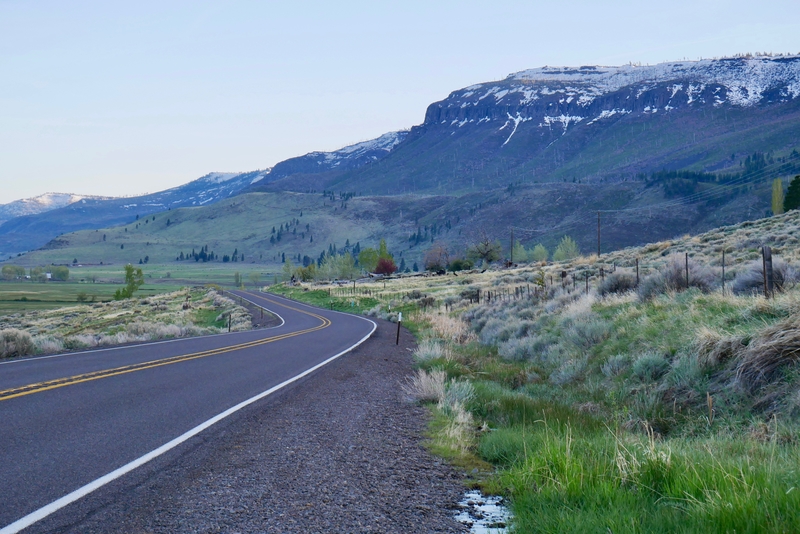
Traveling the Oregon Outback Scenic Byway
Oregon often conjures images of lush rain-soaked forests and snowcapped mountains.
But towering trees and dizzying shades of green only paint a small picture of the state’s beauty and intrigue.
What if I were to tell you that Oregon is two thirds desert? Or that, in the Oregon Outback, cowboy country is alive and well?
Growing up, I didn’t give much thought to the barren eastern half of the state. Like most people, I assumed that there wasn’t much to see amongst the nothingness.
However, I’ve recently begun to realize that the state’s empty spaces are, in fact, teeming with places to visit.
One such place is the Oregon Outback Scenic Byway—a lonely stretch of road that extends from La Pine to Lakeview, past rocky outcrops, shallow lake beds and pastel-hued landscapes.
THE OREGON OUTBACK IN LAKE COUNTY
The Oregon Outback is vast and barren.
Yet while its landscape appears harsh, it wasn’t always so inhospitable. Toward the end of the Ice Age, rain and runoff from melting snow filled the valleys of southcentral Oregon, creating an immense freshwater lake called Lake Chewaucan.
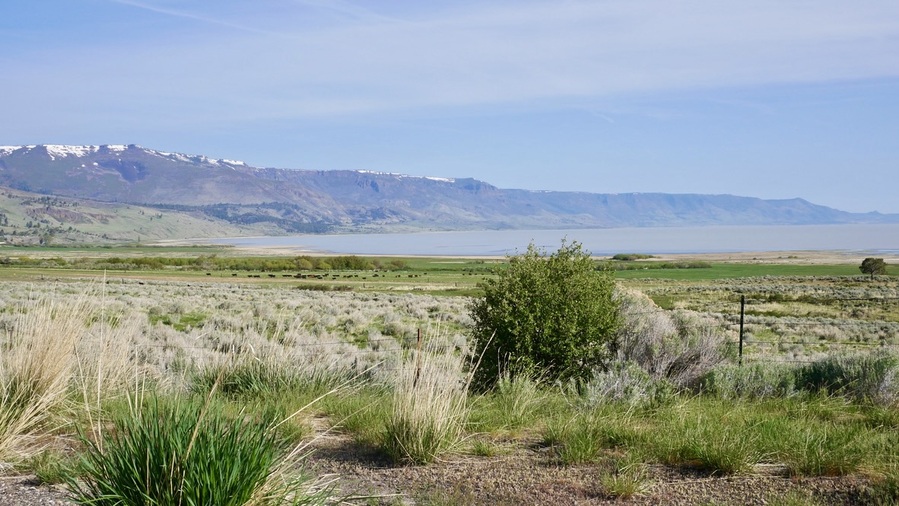
Lake Chewaucan began to dry up toward the end of the Pleistocene era.
As it shrank, alkali and salts concentrated in its remaining waters, making the lake particularly inhospitable to aquatic life.
Today—save for Summer Lake and nearby Abert Lake—the Oregon Outback contains few existing remnants of this bygone inland sea.
DRIVING THE OREGON OUTBACK SCENIC BYWAY
As Oregon Route 31 splits from the Dalles-California Highway south of La Pine, the landscape begins to change.
Pine forests give way to plains of juniper and sagebrush. Craggy snowcapped peaks transform into shallow hillsides. Towns become fewer and farther between.
The immense swath of land that lies beyond this junction is the Oregon Outback—a largely forgotten part of the state that features brush-covered landscapes and wide-open vistas.
Though the Oregon Outback Scenic Byway won’t likely make it on most Pacific Northwest road trip itineraries, driving the route is one of the top things to do in Central Oregon,
THE NEWBERRY CRATER NATIONAL MONUMENT
The actual Oregon Outback Scenic Byway begins in La Pine and extends to the town of Lakeview.
Yet, for the sake of including one of Oregon’s most impressive geologic marvels, I recommend beginning the road trip nine miles north of the junction and taking a detour to the Newberry Crater National Monument.
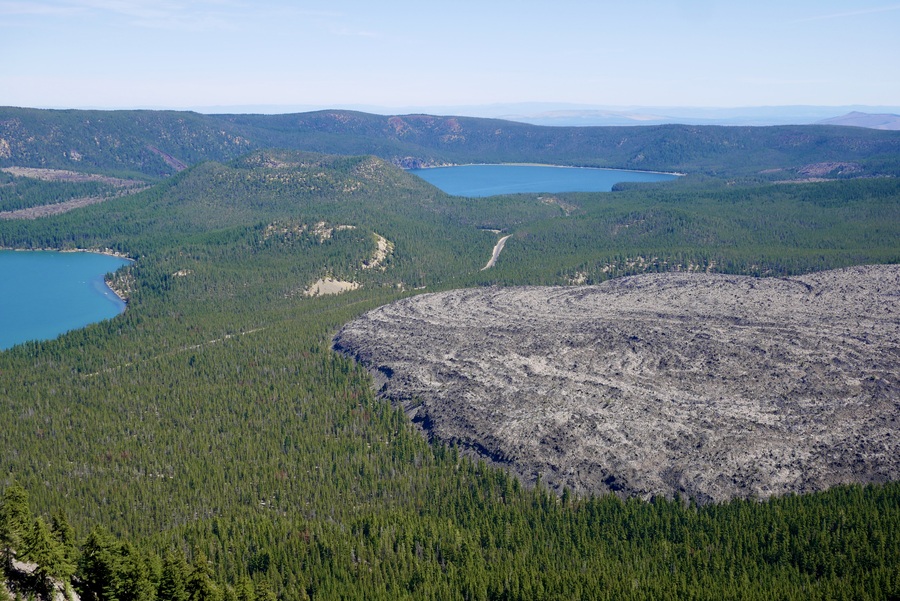
Located 40 minutes south of Bend, the Newberry Crater is a geology-lover’s playground. The national monument contains a large caldera that measures five miles in diameter. It includes fascinating geological features—encompassing pyroclastic cones, vents, lava tubes, twin sapphire lakes, and an impressive obsidian flow that sparkles under the desert sun.
A drive to the top of Paulina Peak affords spectacular aerial panoramas of the crater’s twin lakes and obsidian flow.
And to the south, unobstructed views of the rugged Oregon Outback extend as far as the eye can see.
FORT ROCK STATE PARK
South of La Pine, Ponderosa forests give way to sagebrush, and snow-capped peaks make room for scattered tuff outcrops that punctuate the landscape like raised scabs.
Fort Rock is the most renowned tuff ring in Oregon’s outback. The natural landmark rises from the barren immensity of the high desert. Its enormous amphitheater of towering rock walls is deceptively tall.
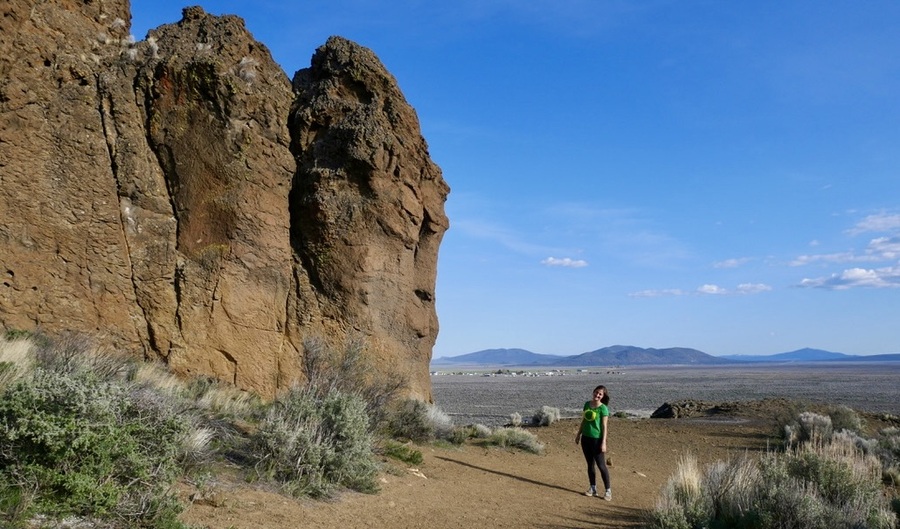
From the car park, an easy 1.5 mile path explores the fortress-shaped outcropping. For those who wish to spend more time in the area, a longer trail loops around the outside of the monument’s walls.
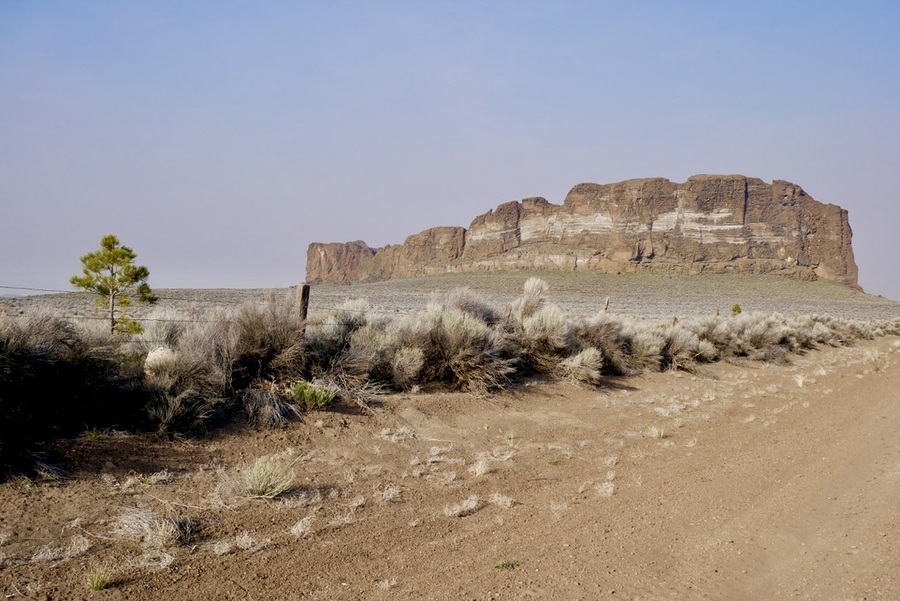
In 1931, archeologists discovered a pair of 13,000 year old sandals in one of Fort Rock’s caves. They remain the oldest shoes ever discovered.
Today, they reside at the University of Oregon’s Museum of Natural and Cultural History.
SUMMER LAKE HOT SPRINGS
The Summer Lake Hot Spring lies at the southern end of Summer Lake, between the Fremont National Forest and the Hart Mountain Antelope Refuge.
An oasis sanctuary, the hidden gem boasts a 100 year old bathhouse, as well as three outdoor rock-walled tubs.
From the road, Summer Lake’s resort is largely nondescript. In fact, on a previous road trip, I remember driving past it and dismissing it for an RV park.
But the small roadside outpost is so much more than a regular campground. Summer Lake features geothermally heated cabins, a campground, and RV hookups.
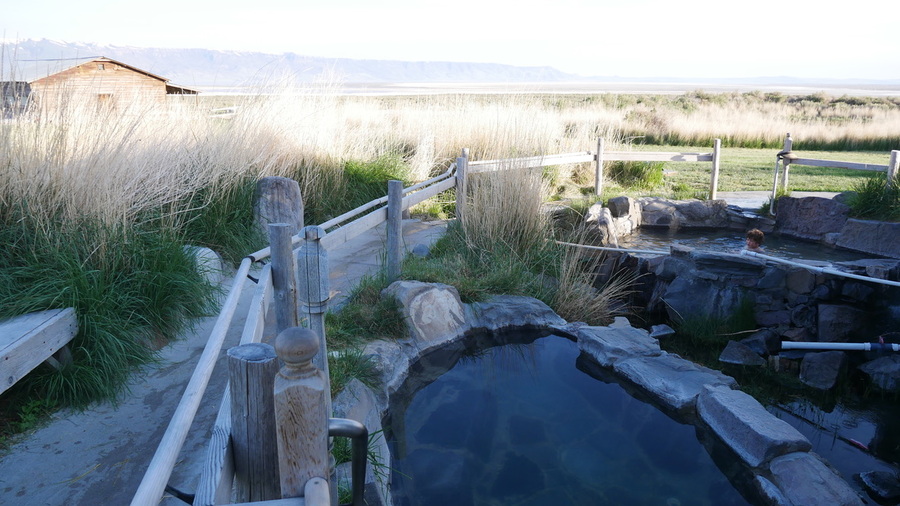
Dan and I stayed the night at Summer Lake during our Oregon Outback road trip.
After admiring the sunset from a viewing platform behind the bathhouse, we took advantage of the resort’s indoor and outdoor soaking pools. Each pool consists of slightly different temperatures that range from steaming to lukewarm. We made ourselves comfortable in the middle pool, and craned our necks skyward.
As night fell, we watched small pinpricks of light emerge and multiply into a canopy of stars.
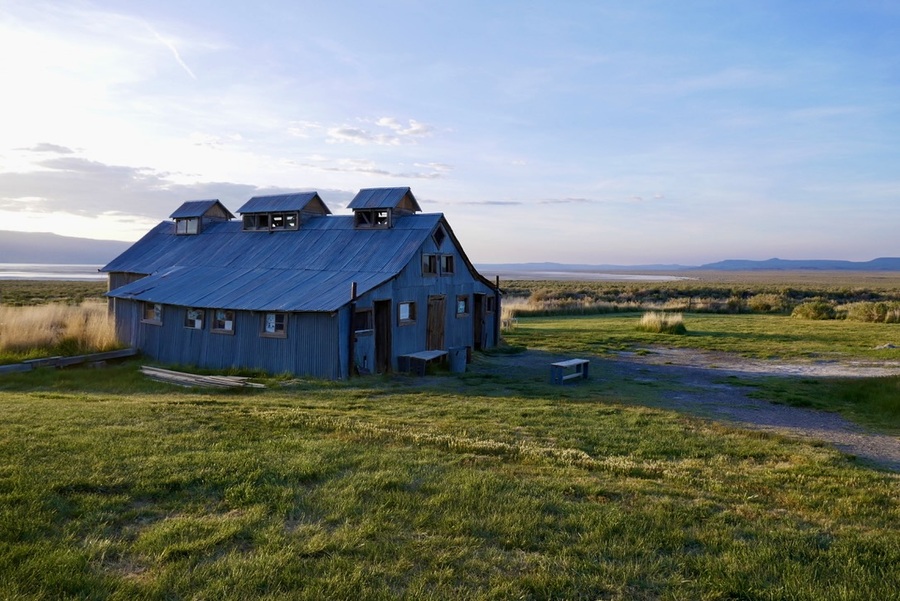
Soaking in the Summer Lake Hot Springs is the perfect way to end a road trip along the arid and oft-forgotten Oregon Outback Scenic Byway.
The geothermal area quickly became one of my favorite hot spring destinations in the United States—rivaling the Chena Hot Springs in Fairbanks, the Boiling River Springs in Yellowstone, and the lovely Crystal Crane Resort in Eastern Oregon.
OREGON OUTBACK ALTERNATE ROUTES
While the Oregon Outback Scenic Byway follows a straight line from La Pine to Lakeview, there are several other nearby attractions that can be included in the desert road trip.
-
ABERT RIM
The Abert Rim is a 30-mile-long escarpment. One of the nation’s longest fault escarpments, it rises more than 2,000 feet above the surrounding landscape. It lies just off the scenic byway, along the US395.
-
CHRISTMAS VALLEY SAND DUNES
The coastal Oregon dunes aren’t the only rolling sand hills in Oregon.
The Christmas Valley Sand Dunes lie east of Fort Rock, near the town of Christmas Valley. The sprawling 11,000 acre wilderness area is a popular OHV destination.
Reaching over 60ft in height, the shifting sand dunes in the Oregon Outback are the tallest in the Pacific Northwest.
The area is accessible via the Christmas Valley National Back Country Byway.
WILDLIFE IN THE OREGON OUTBACK
Lake County offers a unique opportunity to observe desert wildlife in its natural habitat. The sparsely-populated region is a prime viewing area for pronghorn antelope, bighorn sheep, and mule deer.
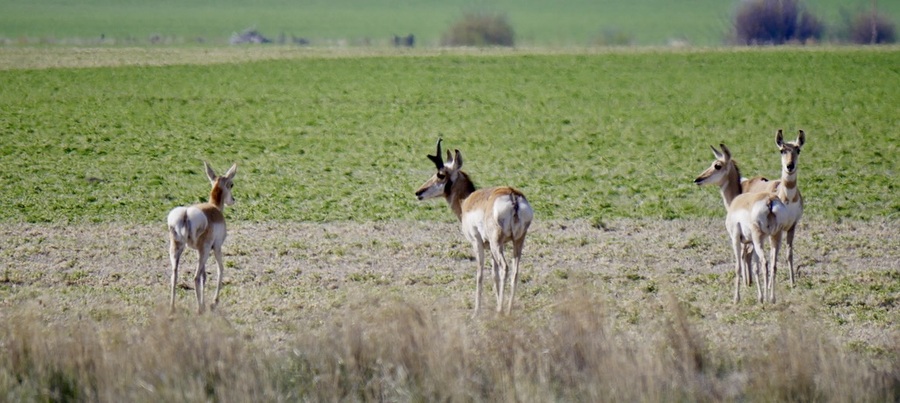
We were lucky to see a herd of pronghorn during our Oregon Outback road trip. Pronghorn are some of the most thrilling animals to witness in Oregon.
Though they can sometimes be elusive, pronghorn live all over southeastern Oregon. The fastest land animal in the Northern Hemisphere, they reach top speeds of up to 60 miles per hour.
BIKEPACKING IN THE OREGON OUTBACK
If you want to truly relish the isolation of the Oregon Outback, you can consider cycling through the vast swath of desert.
The Oregon Outback bikepacking route—a 364 mile network of roads that slices through Central Oregon from top to bottom—is not to be confused with the scenic byway.
The cycling route starts in Klamath Falls, near the California border. It traverses the entire state on lightly traveled, mostly unsurfaced roads.
Yet while the route does not fit fully within the confines of its namesake geographical area, it still shows off some of the outback’s stark beauty. The bikepacking adventure passes by Fort Rock and Summer Lake, following roads that run parallel to the scenic byway.
HIKING IN THE OREGON OUTBACK
While most people explore the outback by car or bike, some outdoor enthusiasts choose to explore the area on their own two feet.
The Oregon Desert Trail includes some of the Oregon Outback’s most iconic views. While it doesn’t follow the same road as the scenic byway, the 750 mile trail showcases the area’s desert vistas.
The hiking trail begins in the Oregon Badlands, east of Bend. It then cuts southward—through the heart of the outback—before veering eastward to Hart Mountain, Steens Mountain, the Alvord Desert, and the Owyhee Canyonlands.
WHERE TO STAY IN THE OREGON OUTBACK
In the Oregon Outback, a tent under the stars will be your best lodging option. There’s no better way to soak in the area’s emptiness.
If camping under a fabric dome isn’t your style, however, you may have difficulty finding accommodation between La Pine and Lakeview. The area is sparsely populated and hotels and guesthouses are few and far between.
The Summer Lake Hot Springs Resort is a notable exception to the lack of places to stay in the Oregon Outback. It offers basic cabins, RV hookups, and tent camping space.
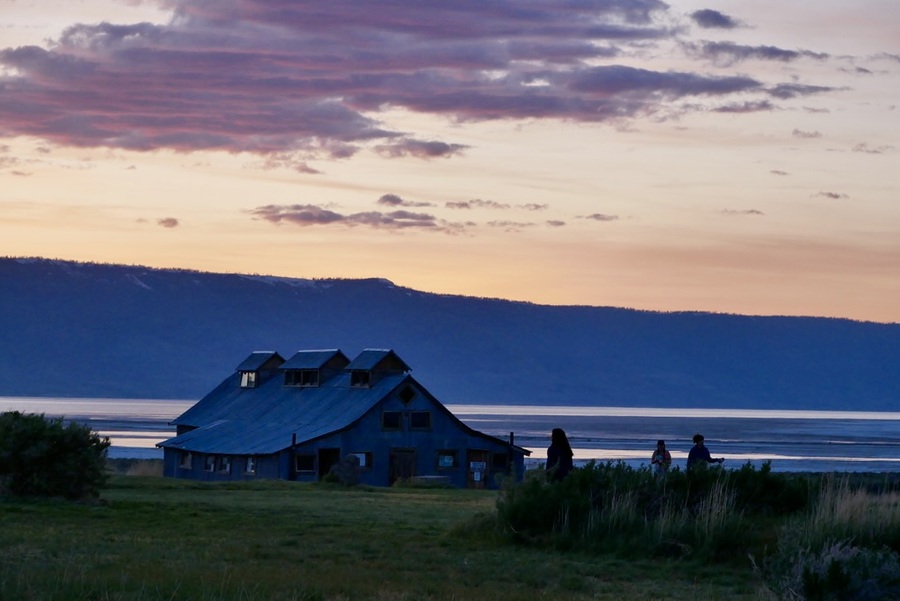
Dan and I brought our own tent and chose to camp. Our campsite ($20 per person) included 24 hour access to the hot springs and indoor soaking pool.
****
While the left side of the Cascade Mountains features the beer-loving, coffee-sipping, tree-hugging part of Oregon that many people know and love, the right side of the state couldn’t be more different.
Across its dividing mountains, Oregon is awash with tiny western outposts, off-the-beaten-path geological wonders, and sagebrush-speckled valleys.
The Oregon High Desert stretches from the Cascade Mountains to Hells Canyon, and from the Wallowas to the Alvord. It is wild. Uncompromising. Remote.
And behind its bleak facade, it conceals a plethora of enticing places worth exploring.
I can hardly wait to discover more.
____________________________________
Like this Post on the Oregon Outback Scenic Byway? Pin It!
